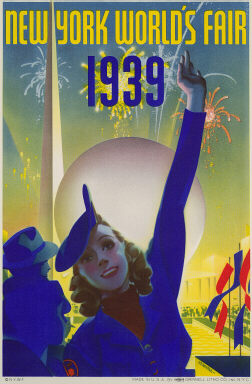 | It's 1939! In New York City, people are amazed at the future at The World's Fair on "The World of Tomorrow" |
 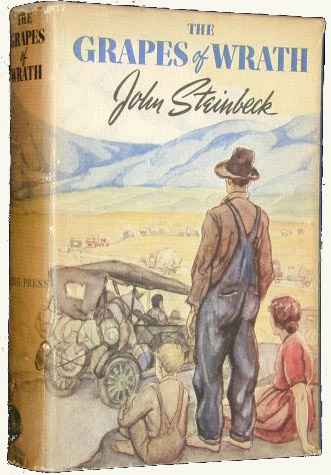 | John Steinbeck publishes his novel, The Grapes of Wrath, a reminder of the struggles in the Dust Bowl due to the economic crisis. |
 | The future is here, with color movies: "The Wizard of Oz" |
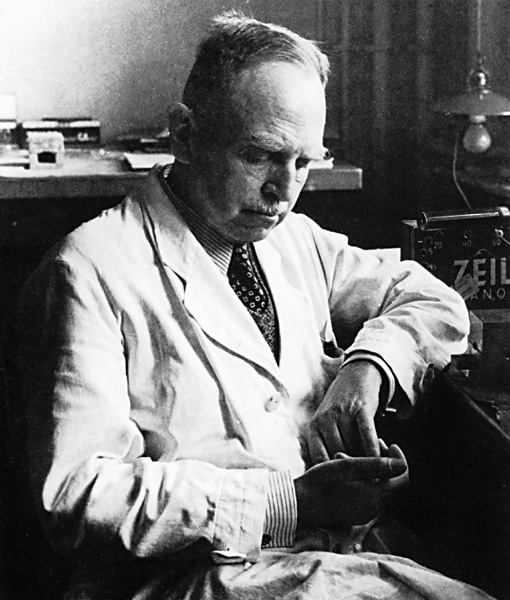 | Late last year (1938), Otto Hahn in Germany discovered (and was able to document) the fission of uranium. This was not just another example of radiation. Nor was it simply a transmutation of elements. The atom was "split." It released neutrons. |
 | Early 1939: the exciting result is announced at a conference at the Carnegie Institution in Washington, D.C. Neils Bohr brings the news himself from Europe. |
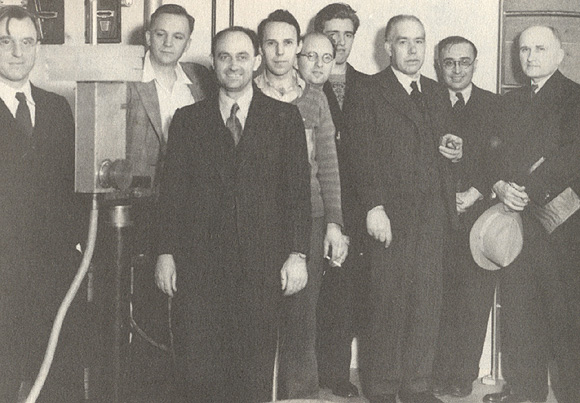 | On January 29th, participants at the conference assemble at the facilities of the Carnegie Institution and replicate the phenomenon, viewing the neutron emissions via an oscilloscope. A photo of the group on the occasion includes Merle Tuve, Enrico Fermi, Richard Roberts (2nd through 4th from left), as well as Bohr (3rd from right).
A rush of research follows. Fission is possible. Neutrons are released. But are there enough neutrons to sustain a chain reaction? [Review the concepts of capture cross-section (the probability that a nucleus will capture a neutron; the difference between fast and slow neutrons (based on energy level), and the use of moderators, such as parafin, to slow neutrons.] |
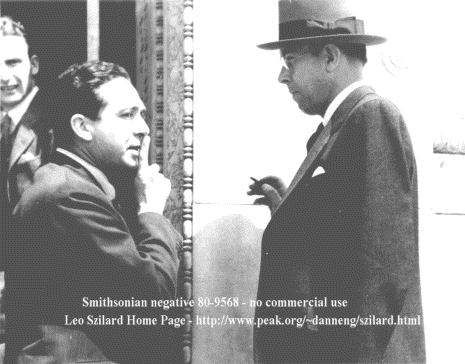 | On March 15, after news that the number of neutrons might sustain a chain reaction, Hungarian emigre physicist Leo Szilard assembles four scientists at Columbia University in New York City to discuss the implications for weapons. |
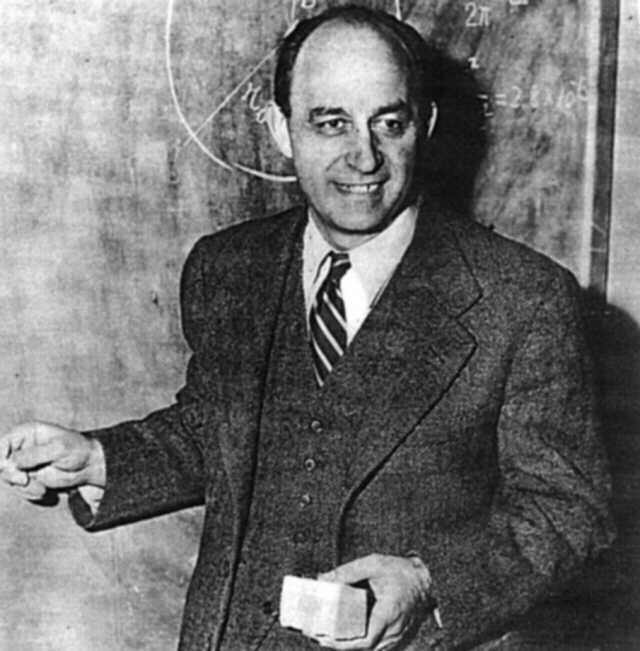 | Italian emigre physicist Enrico Fermi is chosen to represent the group and on March 16 Fermi meets with the Undersecretary of Navy in Washington, D.C. This is the first government contact from the physics community on this issue. The military is unimpressed. |
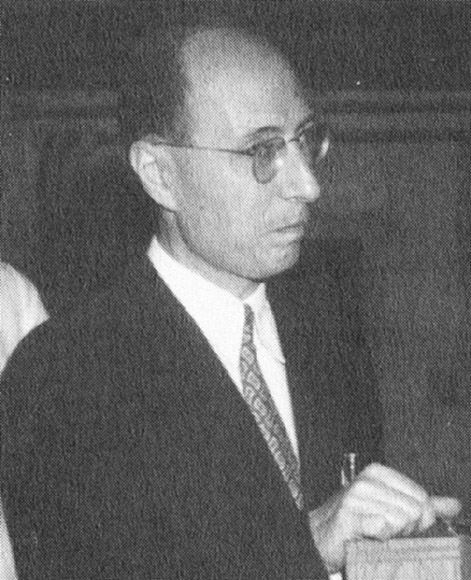 | The challenge becomes how get to the President personally. Szilard discusses contacting the government with fellow emigre, Gustav Stolper, who later mentions it to a Russian immigrant, Alexander Sachs. Sachs is a former biologist and national economist, Vice President of the Lehman Corporation, who once wrote speeches for President Roosevelt (F.D.R.). In July, Szilard becomes impatient. He goes to Albert Einstein at his summer home in Long Island to enlist his support. Because he cannot drive, he draws in fellow Hungarian immigrant-physicist Eugene Wigner. |
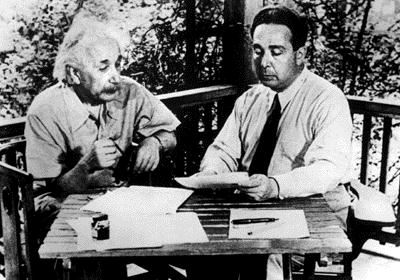 | On a subsequent visit, on July 30, Szilard finalizes a letter with Einstein. |
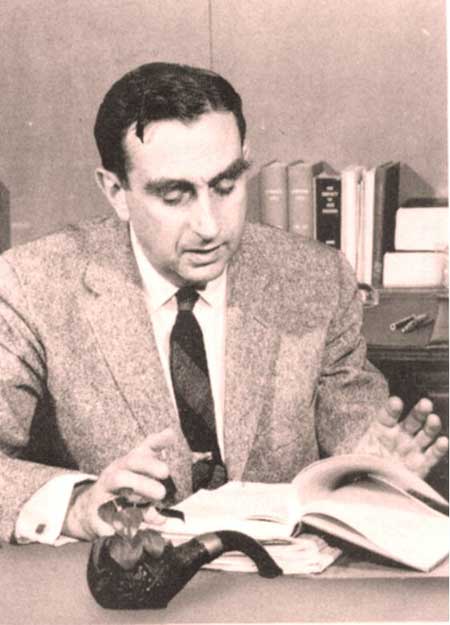 | (This time the driver is another Hungarian physicist, Edward Teller.) |
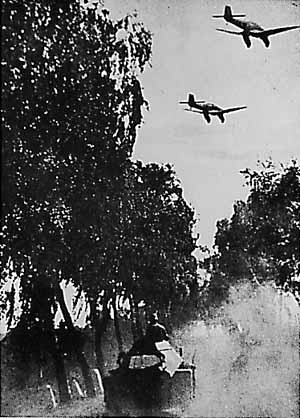 | Having annexed Czechoslovakia in the spring, Hitler invades Poland on September 1. Two days later, England and France declare war on Germany. |
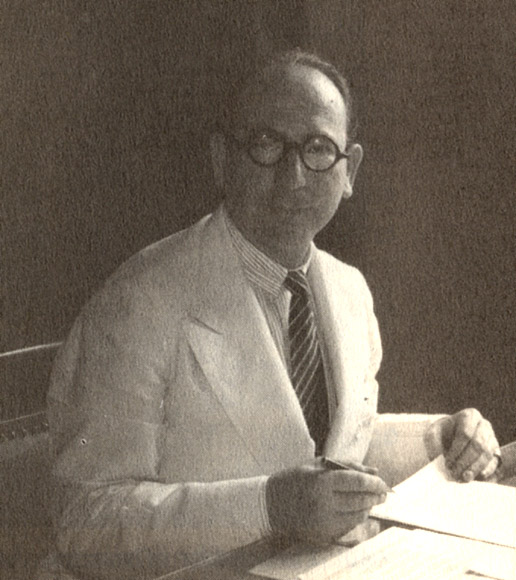 | In late September, Alexander Sachs meets with F.D.R. |
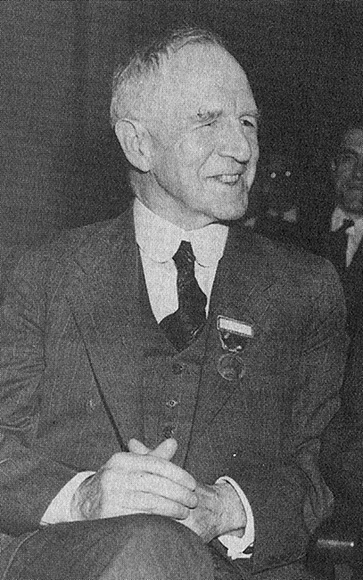 | The President is busy with politics and appoints the head of the Bureau of Standards and the National Physics Laboratory, Lyman Briggs, to assemble a committee to advise him on the matter. |
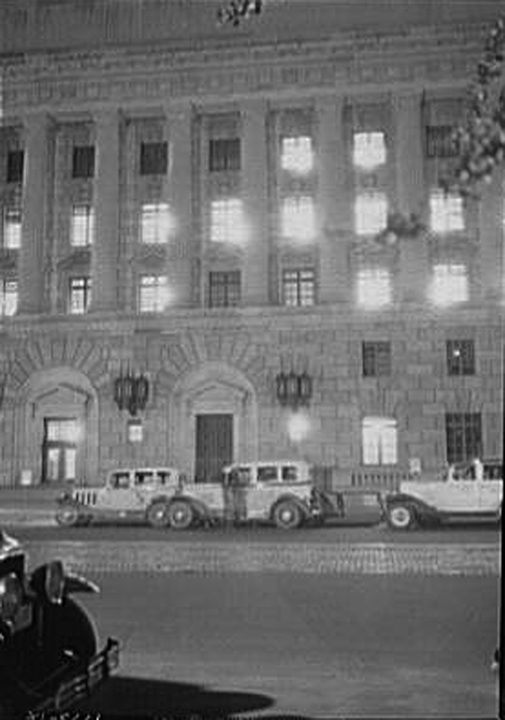 | On a Saturday morning, October 21, 1939, the Committee on Uranium meets in a relatively deserted downtown, at the Department of Commerce. |
The questions for them to address are:- Is sustained nuclear fission (a chain reaction) possible?
- If so, what kind of a weapon might be built? How powerful?
- . . . At what expense and time scale? And "who pays"?
- Would such a prospective weapon be needed or useful currently?
- At what point would research become secret?
- Any other actions appropriate based on scientific information now available?
|

